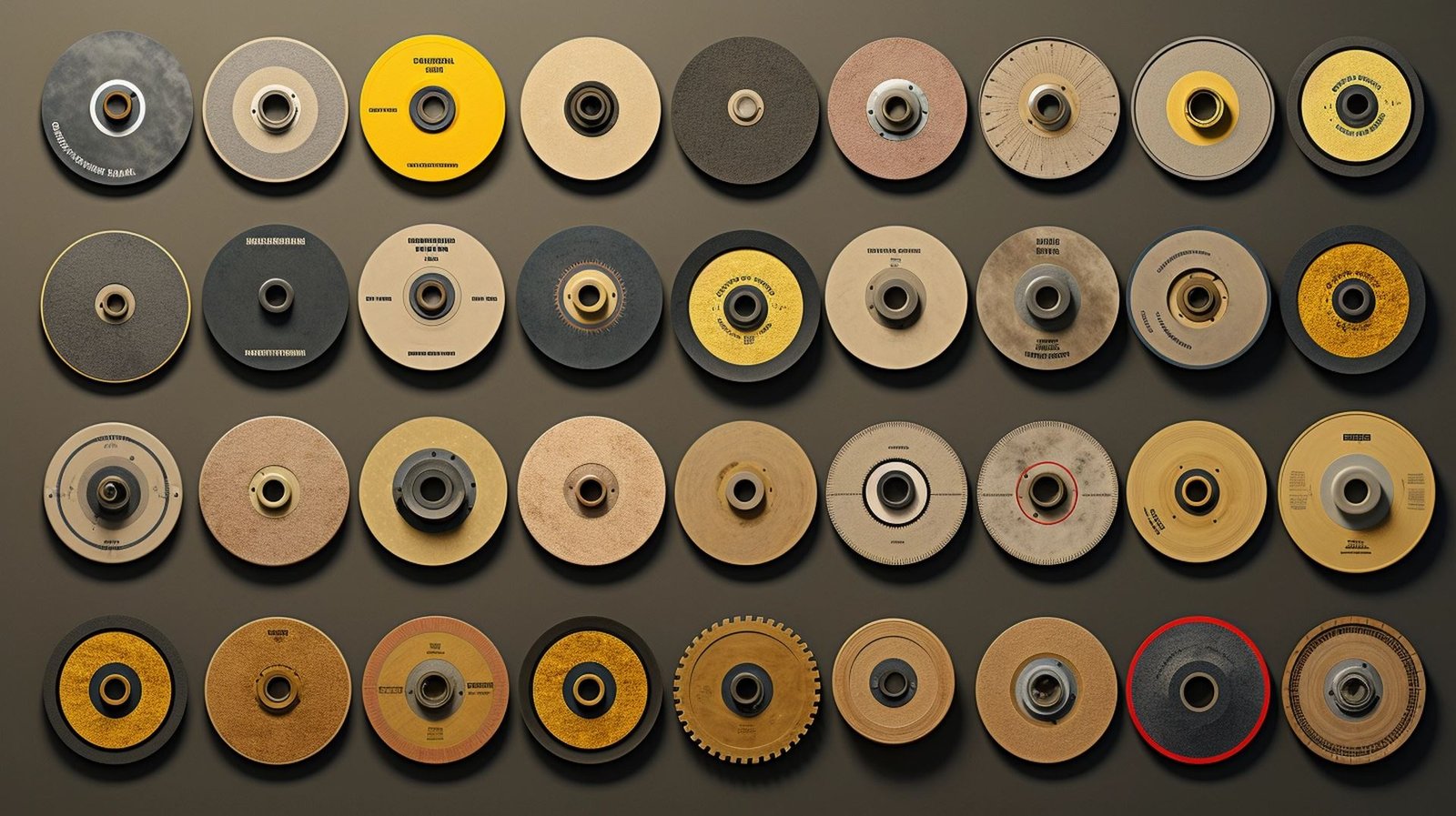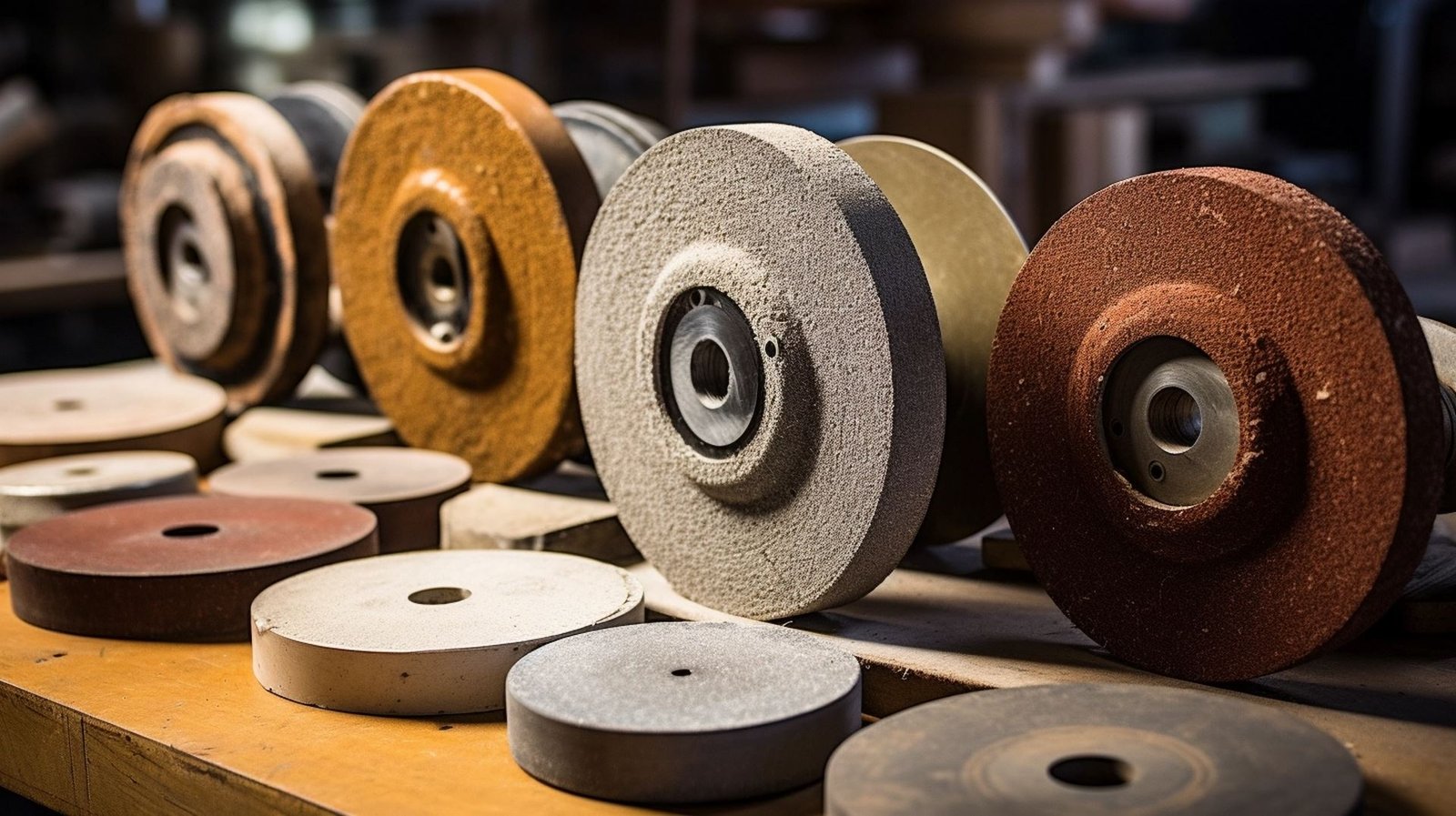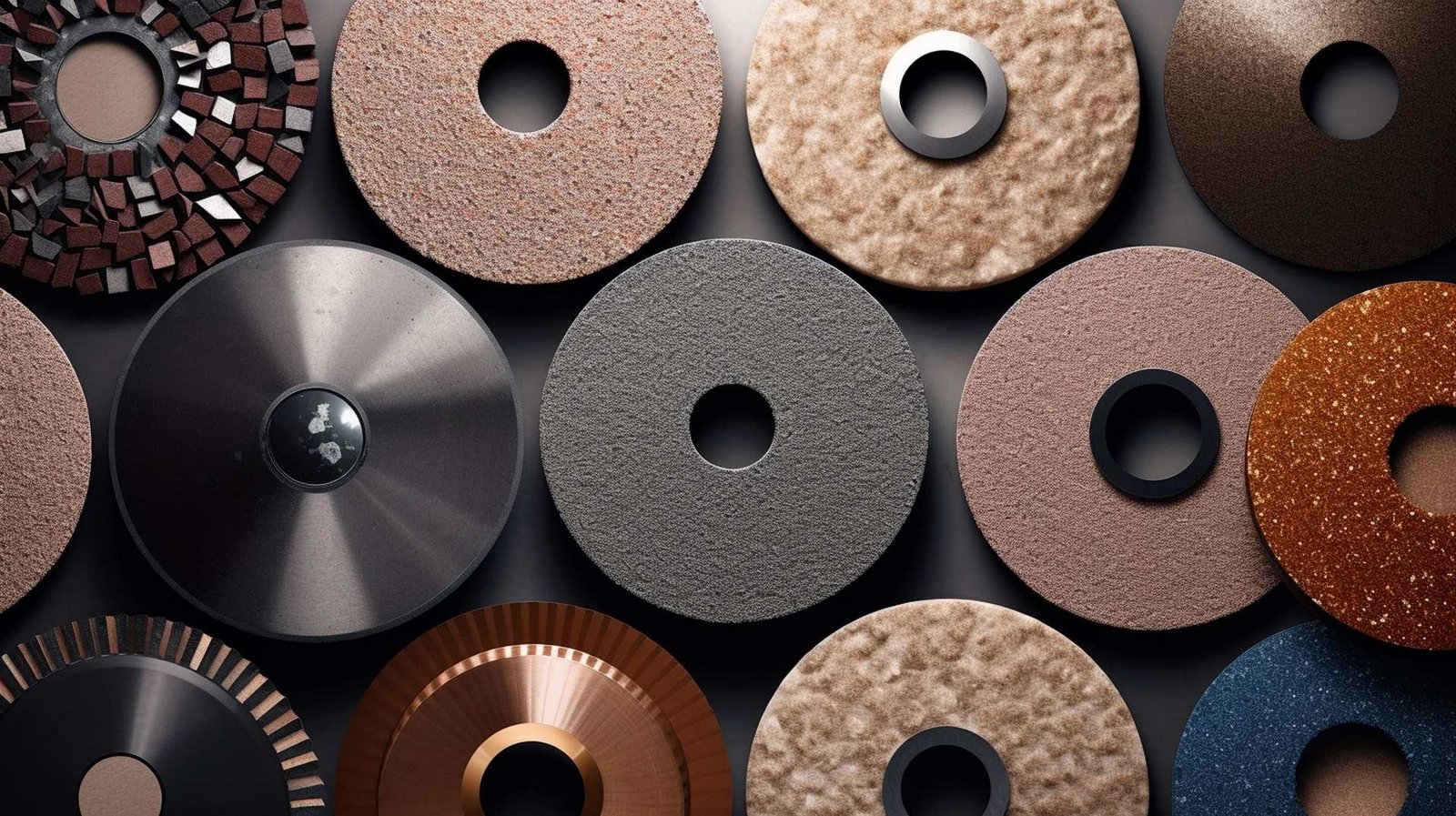In the realm of manufacturing and metalworking, the choice of grinding wheel types holds significant importance in achieving precision and efficiency. With a multitude of options available, each tailored to specific tasks and materials, understanding the nuances of these abrasive tools is paramount.
From the various abrasive grains to the diverse bonding agents that hold them together, a deep dive into the world of grinding wheel types unveils a complex landscape waiting to be explored. As professionals in the field strive to optimize processes and enhance productivity, the selection of the right grinding wheel becomes a critical puzzle to solve, demanding attention to detail and expertise.

The common types of grinding wheels include:
Each type serves specific purposes in various grinding applications, offering unique features and benefits based on their design and composition.
Understanding these common grinding wheel types is essential for selecting the most suitable option for different machining tasks.
Among the various types of grinding wheels available for industrial applications, straight grinding wheels stand out for their versatility and precision. These wheels offer benefits such as high cutting efficiency, suitability for precision grinding tasks, and the ability to maintain shape and sharpness for extended periods. They are commonly used in applications like surface grinding, cylindrical grinding, and tool sharpening. To ensure optimal performance and longevity, proper wheel maintenance is crucial. This includes regular inspection for damage, balancing, and truing. When comparing straight wheels to cup wheels, straight wheels are preferred for tasks requiring precise dimensions and smooth finishes. Wheel dressing techniques like using a diamond dresser help maintain the wheel's cutting ability and shape.
| Keywords | Description |
|---|---|
| Straight wheel benefits | High cutting efficiency, precision grinding, shape retention. |
| Grinding wheel applications | Surface grinding, cylindrical grinding, tool sharpening. |
| Wheel maintenance tips | Regular inspection, balancing, truing for optimal performance. |
| Straight wheel vs. cup wheel | Straight wheels for precise dimensions and smooth finishes. |
| Wheel dressing techniques | Diamond dresser usage for maintaining cutting ability and shape. |
In industrial applications, large diameter grinding wheels play a crucial role in various machining processes due to their efficiency and capability to handle heavy-duty tasks. These high-performance wheels are designed for precision grinding, offering customized solutions to meet specific industry needs.
With advanced technology integration, large diameter grinding wheels can achieve superior results in demanding applications. Manufacturers often rely on these specialized tools for special applications that require consistent quality and exceptional performance. Whether used in aerospace, automotive, or other industries, large diameter grinding wheels provide the reliability and efficiency necessary for achieving precise finishes and meeting stringent production requirements.
Their versatility and durability make them indispensable tools in modern manufacturing processes.
Within the realm of grinding wheel types, one essential category to explore is that of Grinding Cup Wheels, which serve as common tools in various industrial applications. These wheels are known for their efficiency in material removal and surface finish due to the diamond grit embedded in their construction. The diamond grit ensures high grinding efficiency while minimizing tool wear. Here is a table highlighting the key features of Grinding Cup Wheels:
| Feature | Description |
|---|---|
| Diamond Grit | Ensures high grinding efficiency |
| Surface Finish | Provides a smooth finish on the workpiece |
| Material Removal | Efficiently removes material from the surface |
Grinding Dish Wheels are integral components in the realm of grinding wheel types, offering specialized functionality in various industrial processes. These wheels feature a dish shape, allowing for precision grinding in tight spaces and intricate workpieces.
The diamond coating on Grinding Dish Wheels provides durability and ensures longevity, making them suitable for aggressive cutting applications. Proper wheel maintenance is crucial to optimize performance and prolong the wheel's lifespan.
When used correctly, Grinding Dish Wheels excel in tasks requiring intricate detailing and fine finishes. Their unique design and diamond-coated abrasive surface make them ideal for precision grinding operations that demand high accuracy and smooth results in industrial settings.
Segmented Grinding Wheels stand out as a distinctive category among the common types of grinding wheel options available in industrial applications, offering unique features and benefits for specific grinding tasks. These wheels are characterized by their segment design, which consists of individual sections on the periphery of the wheel.
The segment design enhances performance benefits such as improved material removal and cutting efficiency. The segmented structure also allows for better cooling during operation, preventing overheating and maintaining consistent performance.
Moreover, this design promotes a more uniform surface finish on the workpiece, making segmented grinding wheels a preferred choice for tasks requiring precision and control.
A notable category within the realm of grinding wheel types, Cutting Face Grinding Wheels offer distinct advantages and versatility in industrial applications. These wheels feature a unique design with the cutting edge positioned on the face of the wheel rather than the periphery. This configuration enables efficient material removal, enhancing grinding efficiency.
The wheel thickness plays a crucial role in determining the depth and speed of the cut, impacting both material removal rates and surface finish quality. By exposing more of the cutting edge, thinner wheels can achieve finer finishes.
Cutting Face Grinding Wheels are highly effective in applications requiring precision and control over material removal rates, making them a valuable asset in various industries.
The composition of a grinding wheel is essential for its performance, with the bond playing a crucial role in holding the abrasive grains together.
Different types of bonds such as Electroplated, Resin, Polyimide, and Vitrified each offer unique characteristics and are suited for various applications based on their strength and resilience.
Understanding the properties of these bonds is fundamental in selecting the most suitable grinding wheel for specific machining tasks.
Electroplated bond in grinding wheels involves a single layer of abrasive material securely attached by a thin nickel layer, allowing for efficient removal of hard substances without the need for frequent re-dressing.
The process of diamond coating and nickel plating ensures strong abrasive adhesion, enabling high-speed grinding operations.
One significant advantage of electroplated bonds is the option for wheel re-plating instead of purchasing new wheels, providing cost savings.
Additionally, these wheels do not require truing, offer high stock removal rates, and are suitable for form grinding applications.
The combination of these factors makes electroplated bond wheels a desirable choice for various grinding tasks.
Within the realm of grinding wheel types, the resin bond stands out as a common and versatile choice for Diamond and CBN abrasives, characterized by its composition primarily consisting of resin and fillers. Resin bond advantages include resilient systems, good finish, and adaptability for wet or dry applications. Its properties make it ideal for specific applications like working with steels of 45Rc hardness or more when used with CBN, and for Quartz, Ceramics, and HVOF applications when paired with Diamond. The resin bond is known for its compatibility with a range of materials and its ability to provide precise results. Its characteristics make it a go-to option for various grinding needs.
| Resin Bond Advantages | Resin Bond Applications |
|---|---|
| Resilient Systems | Working with high-hardness steels (CBN) |
| Good Finish | Quartz, Ceramics, and HVOF applications (Diamond) |
| Adaptable Wet or Dry |
Polyimide bond, a high-temperature resin, is a preferred choice for grinding applications due to its exceptional performance capabilities and compatibility with Computerized Numerical Control (CNC) machines. When discussing Polyimide bonds, it is essential to highlight the following points:
Understanding the intricacies of Polyimide bonds, including their manufacturing process and maintenance, is crucial for maximizing their effectiveness in grinding operations.
Vitrified bonds, known for their cutting quality and resistance to wear and grooving, are highly favored in precision applications, particularly in the Medical and Dental Industry. The advantages of vitrified bonds include a porous system, a strong bond/abrasive interface, free cutting, low dressing forces, low grinding forces, and one-step conditioning. These properties make vitrified bonds ideal for applications requiring high precision and control over deflection. The technology advancements in vitrified bonds have further improved their performance and durability, meeting the demands of modern grinding applications. Overall, the benefits of vitrified bonds make them a top choice for industries where precision and reliability are paramount.
| Vitrified Bond Advantages | Vitrified Bond Applications | Vitrified Bond Properties |
|---|---|---|
| Porous System | Medical and Dental Industry | Strong Bond/Abrasive Interface |
| Strong Bond/Abrasive Interface | Automotive Industry | Free Cutting |
| Free Cutting | Aerospace Industry | Low Dressing Forces |
| Low Dressing Forces | Tool Manufacturing | Low Grinding Forces |
| Low Grinding Forces | Precision Machining | One Step Conditioning |

Grinding wheels are essential tools in various industries, composed of materials such as aluminum oxide, silicon carbide, cubic boron nitride, and diamond. When considering grinding wheel materials, several key factors come into play:

When selecting the right grinding wheel, crucial considerations include:
What factors should be considered when selecting the right abrasive material for a grinding wheel? The abrasive composition, grit size, wheel hardness, wheel structure, and wheel shape play crucial roles in determining the performance and efficiency of a grinding wheel. Here are some key points to keep in mind:
Selecting the appropriate grain size is a pivotal factor in determining the cutting efficiency and surface finish quality of a grinding wheel.
The grain size refers to the size of the abrasive grains in the wheel. Fine grain wheels have smaller grains and provide a smoother finish, making them suitable for precision grinding.
On the other hand, coarse grain wheels have larger grains and are more effective for fast material removal. The grain size distribution in a wheel impacts its aggressiveness and surface texture.
When choosing a grinding wheel, understanding the optimal grain size for the specific application is crucial. Proper grain size selection ensures the wheel performs efficiently and achieves the desired surface finish.
An essential aspect to consider when selecting the right grinding wheel is the wheel grade, as it plays a critical role in determining the wheel's performance and suitability for specific applications. The wheel grade encompasses various factors that impact its efficiency and effectiveness.
When assessing wheel grade, consider the following:
Careful consideration of these factors is crucial in selecting the most appropriate grinding wheel for your needs.
Given the critical role of wheel grade in determining a grinding wheel's performance and suitability for specific applications, the consideration of grain spacing becomes paramount in ensuring optimal cutting efficiency and surface finish. Grain spacing is essential in controlling parameters such as grain size distribution, porosity, wheel dressing techniques, surface finish quality, and wear resistance properties. Proper grain spacing allows for effective chip clearance, reducing heat build-up and minimizing the risk of workpiece burning. Additionally, it influences the wheel's ability to maintain sharp cutting edges and prevent clogging, thus enhancing overall grinding performance. The table below summarizes the key aspects influenced by grain spacing in grinding wheel selection:
| Parameters | Influence |
|---|---|
| Grain size distribution | Enhanced by proper spacing |
| Porosity control | Optimal spacing reduces clogging |
| Wheel dressing techniques | Easier dressing with appropriate spacing |
| Surface finish quality | Improved with correct grain spacing |
| Wear resistance properties | Longer life due to controlled spacing |
The role of wheel bond is crucial in determining the overall performance and effectiveness of a grinding wheel in various machining applications. The bond strength directly impacts wheel durability, influencing how well the abrasive grains are retained during operation.
Additionally, wheel porosity plays a significant role in grinding efficiency, affecting how effectively the wheel removes material and dissipates heat. Bond flexibility is essential for optimal wheel performance as it allows the wheel to conform to the workpiece's shape, enhancing accuracy and reducing chatter.
Furthermore, wheel hardness is vital for grinding precision, ensuring consistent material removal rates and surface finish quality. The bond composition also contributes to wheel longevity, determining how well the wheel maintains its cutting properties over time.
Consider a variety of grinding wheel types when selecting the most suitable option for your machining applications. Different types of wheels offer varying characteristics that can impact performance. Factors to consider include wheel hardness, grinding efficiency, wheel durability, surface finish, and heat resistance. See the table below for a brief overview of some common grinding wheel types:
| Grinding Wheel Type | Characteristics |
|---|---|
| Straight wheel | Balanced performance |
| Cylinder wheel | Precise grinding |
| Tapered wheel | Accessibility in tight areas |
| Diamond wheel | High precision cutting |
Each type has its unique advantages, so it's essential to match the wheel type with the specific requirements of your machining task.
Vitrified, resin, and metal bonds in grinding wheels differ in bond materials, affecting grinding wheel composition, abrasive grit size distribution, wheel porosity, and hardness. Each type offers unique properties crucial for specific machining applications.
In grinding applications, synthetic diamonds exhibit comparable performance to natural diamonds. Their use in various grinding wheel bonds enhances efficiency and precision. Safety precautions must be adhered to when working with diamonds due to their hardness and potential hazards.
Safety precautions are crucial when using superabrasive grinding wheels. Proper handling, wearing appropriate protective gear, and undergoing adequate training are essential. Familiarize with emergency procedures to ensure a safe working environment and prevent potential accidents.
Grinding wheels can be used on materials beyond metals, like ceramics or composites. They are suitable for ceramic applications, providing precise surface finishes. When chosen correctly for material compatibility, grinding wheels can enhance grinding efficiency on various surfaces.
The efficiency of a grinding process is heavily influenced by the shape and size of the grinding wheel. Factors such as wheel balance, diameter options, shape versatility, surface finish, and material compatibility play crucial roles in determining the effectiveness of grinding operations.
In conclusion, the world of grinding wheel types can be complex to navigate, but understanding common types, bonds, and materials can help in selecting the right wheel for the job.
Consideration of factors such as material being worked on, desired finish, and operating conditions is essential in making an informed decision.
By mastering these aspects, one can confidently tackle any grinding task with precision and efficiency.
